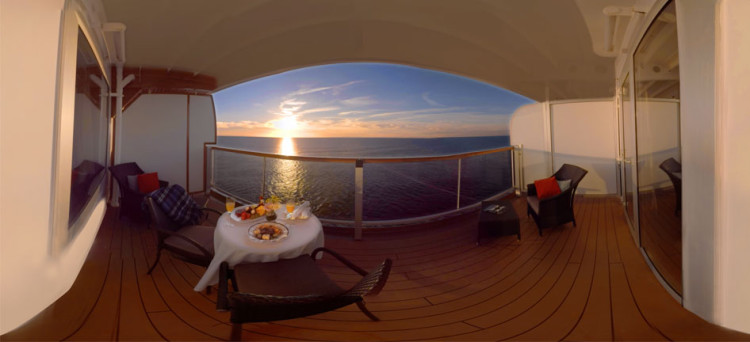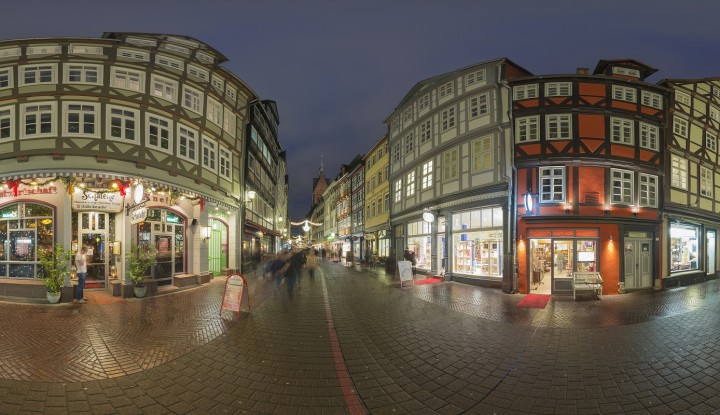When Google launched StreetView, the digital reality shifted immensely. Now anyone could pull up a visual of a specific street, immersing themselves in what it was like to travel down that road — and even exploring interiors of local businesses. Virtual Reality and 360 video have a similar impact by providing an immersive experience of a far-flung destination.
It’s become clear that this technology is powerful in travel, as more brands experiment with the emerging medium. Offering potential guests and visitors the chance to engage with a property, experience or destination prior to purchasing, the thinking is that this will lead to increased excitement, enthusiasm — and conversion.
There are two key technologies in play: Virtual Reality (VR) and 360 degree video (360). The VR setup requires dedicated technology while more affordable analog setups, such as Google Cardboard, create similar experiences with less visual depth. 360 degree video has the advantage of fitting within existing platforms, such as YouTube, while also translating seamlessly to virtual reality. All users have to do is hit play and then use the cursor to move the view around the shot.
Here’s why these technologies are shaping travel marketing now and into the future.
 Carnival Cruise Lines has gone all in. They’ve built experiences for Google Cardboard to promote its ships and launched a partnership with AT&T and Samsung to offer VR tours of the Carnival experience across AT&T’s network of stores nationwide. The experience even includes available excursions, adding an upsell opportunity for increased revenue — and epitomizing the “try before you buy” promise of VR/360 technology.
Carnival Cruise Lines has gone all in. They’ve built experiences for Google Cardboard to promote its ships and launched a partnership with AT&T and Samsung to offer VR tours of the Carnival experience across AT&T’s network of stores nationwide. The experience even includes available excursions, adding an upsell opportunity for increased revenue — and epitomizing the “try before you buy” promise of VR/360 technology.
Immersive storytelling
All great marketing starts with a story, and the ability to build a new kind of story is built into VR/360 technologies. Similar to the “choose your own adventure” classic book series, immersive storytelling is built upon choice. VR/360 empowers the viewer to explore the scene without interference or guidance. This immersive experience triggers a hit of wanderlust when the viewer envisions themselves there. Contrary to some skeptics’ claim that VR/360 will eliminate the desire to travel, the viewer is more apt to see themselves experiencing the adventure. This delivers a deep connection and forges a bond with the destination that encourages that super-specific travel itch. One of the best examples is how Qantas integrates VR/360 tech in the Qantas experience. While the airline is still featured prominently, the videos are just as much about inspiration related to place and time within the destination. The most stunning example is the video above, one of many created by Qantas which showcase both the airline and destinations to create a sense of awe and adventure of traveling to exotic places. Another creative application of VR came from Marriott’s Content Studio, which built a 4D “Teleporter” station that combined the visuals of Oculus Rift with sound and smells to mimic a true travel experience. The marketing creation traveled around the U.S., building buzz and wanderlust for Marriott properties and destinations.Try before you buy
Brochures have long been a mainstay of travel agents. Historically, these paper leaflets were the primary means to trigger wanderlust in prospective travelers. Walls stacked with teasers from faraway lands greeted a customer, with the travel agent working diligently to tailor the right experience. Meant to inspire, the number of options were often overwhelming. Trust was paramount — and there wasn’t always “truth in advertising” when it came to what a traveler experienced during the journey. The popularity of user generated content quickly changed the landscape for travel marketing, as consumers could explore other travelers’ reviews before booking. Eventually smartphones will be 360-enabled, changing the landscape once again as users can document any travel experience in its full 360 degree glory. Cruise lines are a great example of VR done right. Potential guests really want to see the staterooms, as well as explore a particular ship’s amenities. Carnival Cruise Lines has gone all in. They’ve built experiences for Google Cardboard to promote its ships and launched a partnership with AT&T and Samsung to offer VR tours of the Carnival experience across AT&T’s network of stores nationwide. The experience even includes available excursions, adding an upsell opportunity for increased revenue — and epitomizing the “try before you buy” promise of VR/360 technology.
Carnival Cruise Lines has gone all in. They’ve built experiences for Google Cardboard to promote its ships and launched a partnership with AT&T and Samsung to offer VR tours of the Carnival experience across AT&T’s network of stores nationwide. The experience even includes available excursions, adding an upsell opportunity for increased revenue — and epitomizing the “try before you buy” promise of VR/360 technology.
